To mark the 60th anniversary of the publication of Ring of Bright Water, take an armchair tour of the places that influenced writer Gavin Maxwell
MORE FROM SCOTLAND MAGAZINE
Author, painter, aristocrat, crack shot, ardent wildfowler, racing driver, Scots Guard and social renegade, Gavin Maxwell was first and foremost a naturalist. He bore the scars, quite literally: a ring-tailed lemur once severed his tibial artery.
Throughout his life, the author of Ring of Bright Water was surrounded by animals. He had many pets, including a springer spaniel called Jonnie, a cocker called Judy, Giddy the pony, a heron, a blind vole, an owl called Andrew, Jackie the jackdaw, five Greylag geese, a wildcat kitten, a water rail, a herring gull, a hedgehog, Mary the cockerel, a Slovakian gull and a goat called Alftruda.
He also, of course, had several otters – Chahala, Mijbil, Mossy, Monday, Tibby, Edal and Teko. Indeed, his “thraldom to otters” made them all famous.
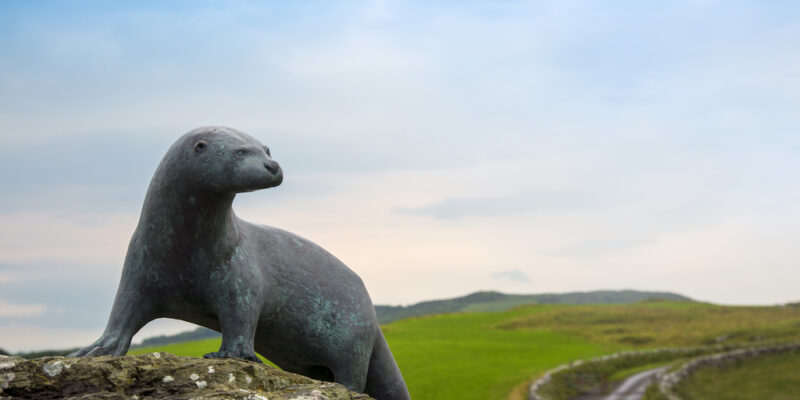
Born in 1914, his father having been killed three months before in one of the first offensives of the First World War, Maxwell was brought up by his mother (who he slept with until the age of eight) and maiden aunts. One of his aunts ran the world’s largest Chinchilla rabbit fur farm and another, Aunt Moo (Muriel), was a zoologist who fostered his “deep preoccupation with lesser animals”.
Maxwell described himself as “as sensitive as a hermit crab without a shell.” For Maxwell, “splendour could not be splendid were it not desolate too.” And said that “the love of animals as well as human beings only increases your suffering.” He quickly learned that otters are partial to human earlobes.
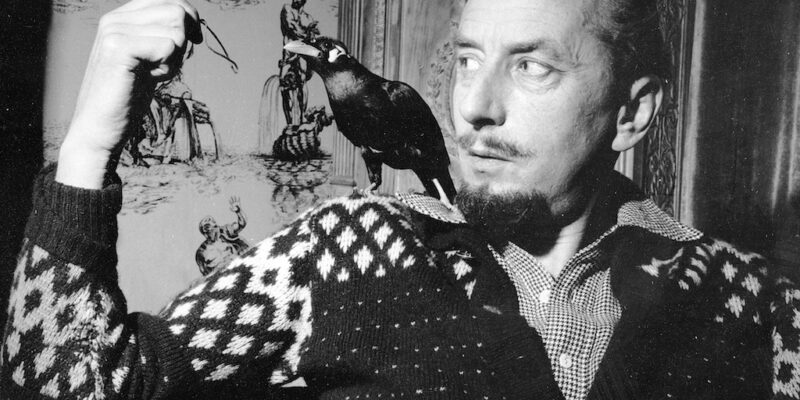
In 1945, Maxwell bought the Hebridean island of Soay to open a basking shark fishery. This resulted in his first book, Harpoon at a Venture. But he is remembered chiefly for the Ring of Bright Water trilogy, a series of memoirs that charted his life from 1956 when he returned to Scotland with an otter.
Though the Ring of Bright Water books were written on the northwest coast of Scotland, in reality the Maxwell trail begins a lot further south at his birthplace of Elrig (which is Gaelic for ‘deer run’) on the Machars peninsula in southwest Scotland.
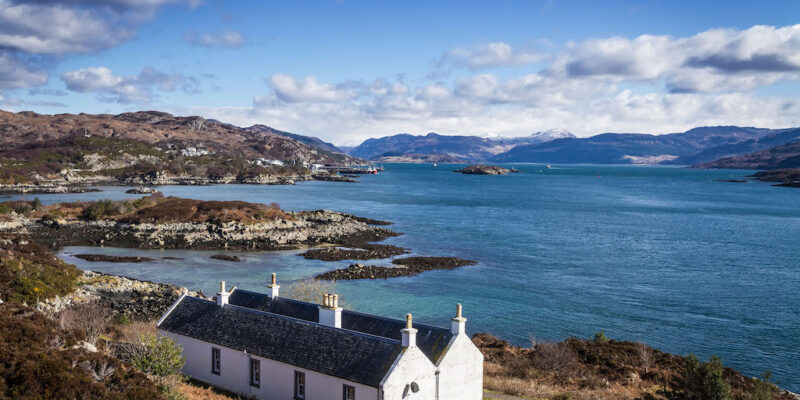
A small clachan (hamlet) in Dumfries and Galloway near Port William, the family house, described by Maxwell as “a genteel residence”, was built in 1912 by Maxwell’s father near the 12th-century motte and 16th-century Myrton Castle. Maxwell’s father was the son of a baronet and owner of a 17,000-acre estate at Monrieth in Wigtownshire, and his mother was the fifth daughter of the Duke of Northumberland, one of the country’s largest landowners and a friend of James Smithson of Smithsonian fame.
Maxwell’s grandfather was Secretary of State for Scotland, while one of his uncles was the Minister of Education and a coal mine owner. It is said his aunt, Helen, once owned Marie Antoinette’s pearls. As a child, Maxwell was nursed by none other than Lord Horder, the King’s physician.
With his two brothers and sister, he “wintered drearily in England” when the estate was let for shoots. But Scotland was his inspiration. Elrig gave him “uncomplicated contentment” and “emancipation.”
At Elrig, “a gaunt, grey building standing on a hillside of heather and bracken”, wearing kilts of monchrome shepherd’s plaid, the children grew up among “an infinity of rock pools”, “trees stunted and deformed by incessant westerly winds”, heughs (grass cliffs), “waving bog cotton”, “marram-grown dunes” and “the wild notes of tumbling lapwings”.
You can also visit Changue Glen, Fey Wood, a little further inland, and the family’s Kirk of Mochrum. Here, braving “the hustling wind”, you can stand as Maxwell himself did at the cairn with views over the Mull of Galloway, breathing in “the only outdoor landscape,” as Maxwell once confessed, “in which I felt completely at home.”
Maxwell’s final home, the six-acre ‘White Island’ Eilean Bàn lies further north between Kyle of Lochalsh and the Isle of Skye, and since 1995 it has acted as a stepping stone for the Skye Bridge.
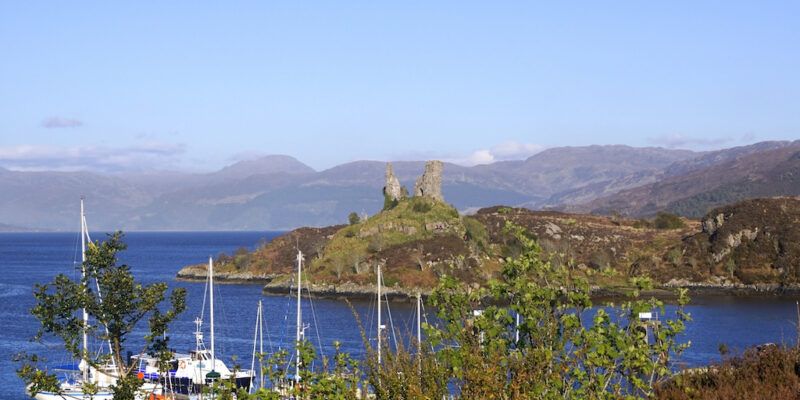
The island looks out to Castle Moil, built for a Norwegian princess who married into the Mackinnon clan. The princess was nicknamed ‘Saucy’ Mary, supposedly because she used to charge a toll from ships passing through the straits and bare her breasts as a thank you.
Maxwell converted two lighthouse keepers’ cottages on the island into a space known as the Long Room and planned a zoo and an eider duck colony. He donated geese to Sir Peter Scott’s Slimbridge Wildlife Centre and the property was eventually saved as a community resource by the Born Free Foundation, whose founders Virginia McKenna and husband, Bill Travers had starred in the 1969 Ring of Bright Water film.
The Long Room is now a museum to Maxwell’s life and interesting artefacts include the hand-written first page of Ring of Bright Water, named after a line from a poem by Maxwell’s close friend Kathleen Raine.
Looking out to Loch Duich and the Five Sisters of Kintail, a guide tells visitors that the otter named Mijbil came from Basra while Teko was from Sierra Leone. And, so that it could share his first-class sleeper carriage from London, the Major once described one otter – then considered vermin – as an Illyrian or Balkan poodle.
After visiting Teko’s memorial stone and the 70ft 1857 Stevenson Lighthouse, once lit by sperm whale oil and decommissioned in 1993, and looking out for porpoises, Russo dolphins, seals basking on the skerries and wild otters, the next place to visit is the Sound of Seal with its “wheeling gulls” and “pale satin sea”.
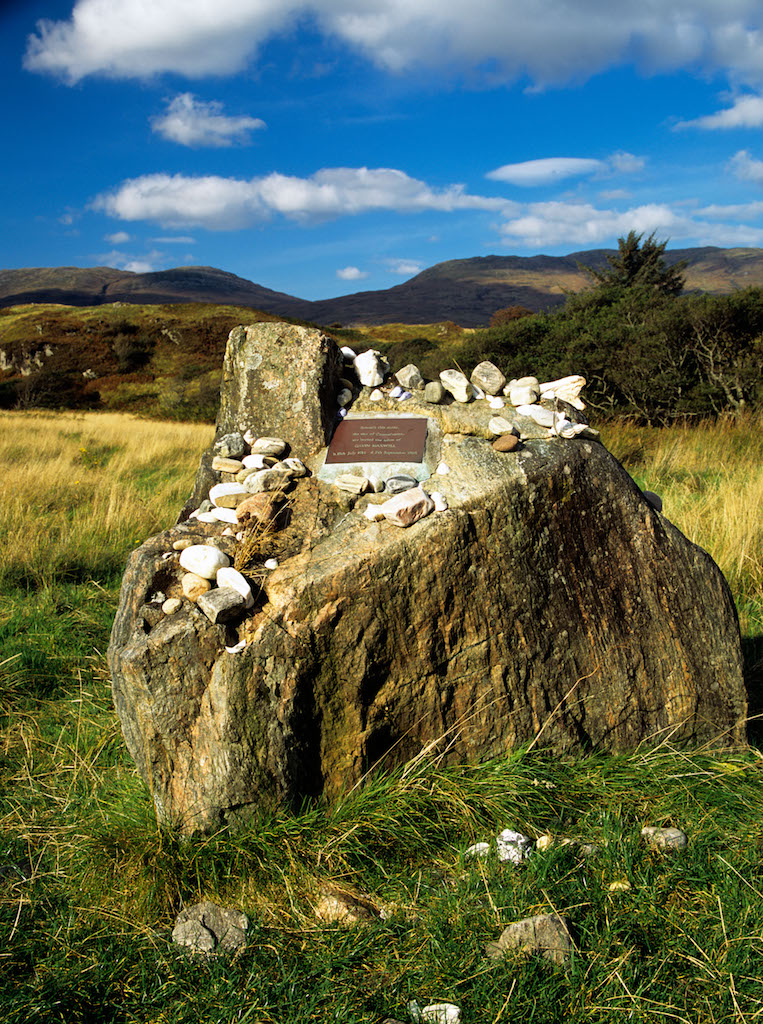
Maxwell wrote his classic books in a quiet Highland cottage at Sandaig (called Camusfearna in the books in a bid to keep the location secret) back on the mainland (London proved unsuitable after he was photographed walking an otter on a lead down the King’s Road). Nevertheless, he continued to have live eels delivered for his otters from London.
On the road from Glenelg to Arnisdale, over the Allt Mor bridge, a forestry track takes you into Lord Dulverton’s estate, down through brambles, larch, Sitka spruce and encroaching conifers to a timber-harvested, wind-cropped meadow and a shingle beach and bay.
Here, a large boulder with a slate plaque marks where Maxwell’s ashes lie. His remains are buried on the site where his writing desk once stood in the study of his ill-fated “weather-worn cottage” that burned down in 1968.
The waterfall (“the soul of Camusfearna”) and rowan tree (reputedly cursed) are still there, as is the memorial to Maxwell’s beloved otter Edal (1958-68) who perished in the fire. Both sites are decorated with seashells and posies of sea pinks by fans and admirers. Nearby are the rusting, briar-grown remains of the trailer used for his boat, Polar Star.
Maxwell’s works are an ode to Scotland and there are few places that left as much of an impression on him as Sandaig Bay, the isolated spot where he raised his beloved otters. When he lifted a seashell to his ear, Maxwell didn’t hear the sea, he heard the waterfall at Camusfearna.
True fans of Maxwell can stay in his last home, the lighthouse keepers’ cottages on their own island, accessed via a private door on the side of the Skye Bridge. eileanban.org
This small museum in Kyleakin in southeast Skye is a great resource for finding out more about Maxwell. You can also organise tours of Eilean Bàn from here. eileanban.org/visitor-centre.html
Pop into Maxwell’s local pub, a traditional Highlands inn, near where the original Skye ferry crosses the Kyle Rhea narrows from the mainland. glenelg-inn.com
MORE FROM SCOTLAND MAGAZINE

SCOTLAND MAGAZINE
Published six times a year, every issue of Scotland showcases its stunning landscapes and natural beauty, and delves deep into Scottish history. From mysterious clans and famous Scots (both past and present), to the hidden histories of the country’s greatest castles and houses, Scotland‘s pages brim with the soul and secrets of the country.
Scotland magazine captures the spirit of this wild and wonderful nation, explores its history and heritage and recommends great places to visit, so you feel at home here, wherever you are in the world.